




















9
After hearing a missing paddler had been found, Station 4 (Mykonos) rushed to save his life.
12 MORE THAN MEETS THE EYE We find out more about white sharks’ habitats and habits, and how awareness can help save lives.
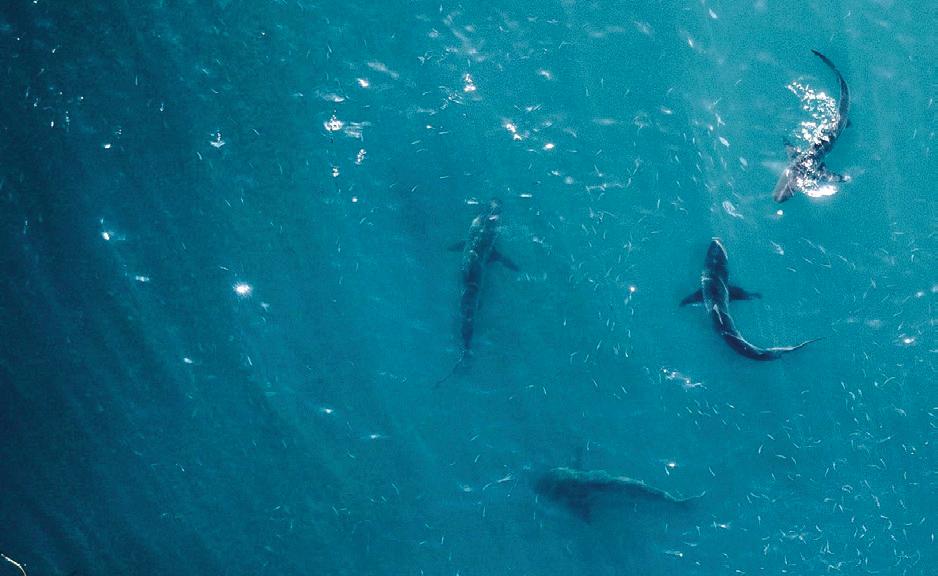
16 ENTANGLED SEAL FREED It took some crafty animal-rescue work from Station 6 (Gqeberha) crew to free a seal with rope around its neck.
18 NON-FATAL
Drowning doesn’t necessarily stop after the event itself. We share the signs and what to look out for.
22 KIDS’ CLUB
Games and water-safety lessons for our young members.
26 COVERING ALL BASES
We chat to training manager Graeme Harding about the importance of being rescue-ready.

30 A TRIP TO PORT ST JOHNS The Drowning Prevention team visits the Eastern Cape to deliver the second Survival Swimming Centre and engage with the community on water safety.
33 SAVING LIVES: ONE CHILD AT A TIME Survival swimming instructor Mlungisi Ndamase shares why his loves what he does.

35 STATION AND SPONSOR NEWS The NSRI wins an IMRF award.

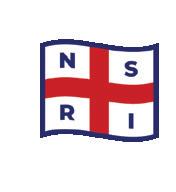
42 MASTERS OF THE WIND
Naturalist Georgina Jones reveals more about albatrosses.
46 NSRI BASE LOCATIONS
Of course we’ll be there, but basic advice that deserves repetition over and over again includes the following: Ensure that children are supervised. Get local advice on beaches or launches. Always wear lifejackets on boats, boards, kites, kayaks and skis. Avoid rip currents. Don’t drinking alcohol on or near water. Know what to do in emergencies.
Water must be fun, but it can only stay so if our interaction is responsible and safe. Help



As always, I want to give a shout-out to you, the community that supports us and helps us with our essential work. Without your active moral and financial support, volunteers all over the country from Port Nolloth to St Lucia and inland would not be able to do what they do. Our core values include life, community, trust, inclusivity, dignity and leadership – values we see through your support every day we teach children or put on a wetsuit, so thank you. You really are an essential part of our journey to make South Africa a water-
All the best for the end of this year and the start of a new one. Stay focused, stay safe and stay alive!
LEEVE ROBERTSON, CEO
NSRI, 4 Longclaw Drive, Milnerton, Cape Town, 7441; PO Box 154, Green Point 8051 www.nsri.org.za youtube.com/@NSRISeaRescue





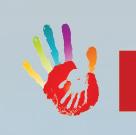


THE PUBLISHING PARTNERSHIP
MANAGING EDITOR
Wendy Maritz
ART DIRECTOR Ryan Manning
ADVERTISING EXECUTIVE
Bernice Blundell
EXECUTIVE DIRECTOR
Mark Beare
PRODUCTION DIRECTOR
John Morkel
MANAGING DIRECTOR
Susan Newham-Blake
ADDRESS
PO Box 15054, Vlaeberg 8018
TEL +27 21 424 3517 FAX +27 21 424 3612
EMAIL wmaritz@tppsa.co.za
NSRI
OFFICE +27 21 434 4011 WEB www.nsri.org.za
FUNDRAISING AND MARKETING DIRECTOR

Janine van Stolk janine@searescue.org.za
MARKETING MANAGER
Bradley Seaton-Smith bradley@searescue.org.za
COMMUNICATIONS & PR MANAGER
Kuhle Mkize kuhle@searescue.org.za
PRODUCED FOR THE NSRI BY
The Publishing Partnership (Pty) Ltd, PO Box 15054, Vlaeberg 8018.

Copyright: The Publishing Partnership (Pty) Ltd 2022. All rights reserved. Reproduction in whole or in part is prohibited without the prior permission of the editor. Opinions expressed are those of the authors and not the NSRI. Offers are available while stocks last.
PRINTING Shumani RSA
ISSN 1812-0644
The Hout Bay Yacht Club (HBYC) rowing group was deeply grateful when the NSRI recently came to their rescue.
The Leopard rowing crew left Hout Bay Harbour at about 10am on Sunday 7 August and decided to head for Seal Island to take full advantage of the beautiful day and perfect weather conditions.
As they rounded the Sentinel corner, the wind unex pectedly picked up and the crew decided to turn back and head for the calmer conditions in the bay.
Very quickly the northerly wind strengthened and the crew was unable to handle the changing conditions. The wind blew them across the bay, leaving them only one option: to try to aim for the vicinity of the beautiful coast-side boutique hotel Tintswalo and drop anchor. The NSRI had been alerted and although they were attending to other incidents because of the extreme weather conditions, they still managed timeously to come to the rescue of the very relieved and grateful crew of the Leopard.
Within minutes of arriving, the NSRI team was in full control of the situation – rowers were taken onto the NSRI boat and given warm blankets, and the Leopard was attached and towed back to safety.
Members of the HBYC rowing group have subsequent ly met with the NSRI to collaborate on lessons learnt and establish best practices and awareness in preparation for all circumstances and conditions when out in the waters of our wonderful Hout Bay.
Their effort and professional support in rescuing this crew in challenging sea conditions were exemplary.
Once again, many thanks – what a critical and profes sional service you provide!
As a bit of fun, but in no way to make light of the incident, a band that regularly plays at the HBYC quickly composed an ode to the event in true Irish ballad tradi tion. [See page 6]. HAYDEN WILLIAMS

We are rowing, We are rowing To Seal Island, then who knows where!

We are blowing on stormy waters
To be near you, Tintswalo buoy. We are blowing, We are blowing like a bird across the bay. We are waiting under grey skies
To be rescued by the NSRI. CHORUS: Can you hear us? Can you see us? We are blowing so far away. We are bailing, Forever praying
To be with you, O, NSRI.
The writer of the winning letter published in the next issue of Sea Rescue will receive an NSRI hoodie.

Email your letters to magazine@ searescue.org.za or post them to Sea Rescue magazine, PO Box 15054, Vlaeberg 8018. (Letters may be shortened and the winning letter is chosen at the editor’s discretion.)
In 2019, two friends and I were rescued by Station 26 (Kommetjie) when my boat flipped over in the surf. We are so grateful that the NSRI was able to assist us and we are lucky to be alive. So for my birthday this year, in lieu of gifts I asked people to help me make a donation to the NSRI. It’s not much but it’s something: we have managed to put together R3 500. I will forever be grateful that you guys were able to assist us.
Thank you, Shaun, for organising this generous donation from your family and friends. Ed
Salute to the incredible men and women who save lives and promote respect for open water every day. As their supporters, we’re proud to equip them with health and well-being services so they can continue to be who they truly are: invaluable.
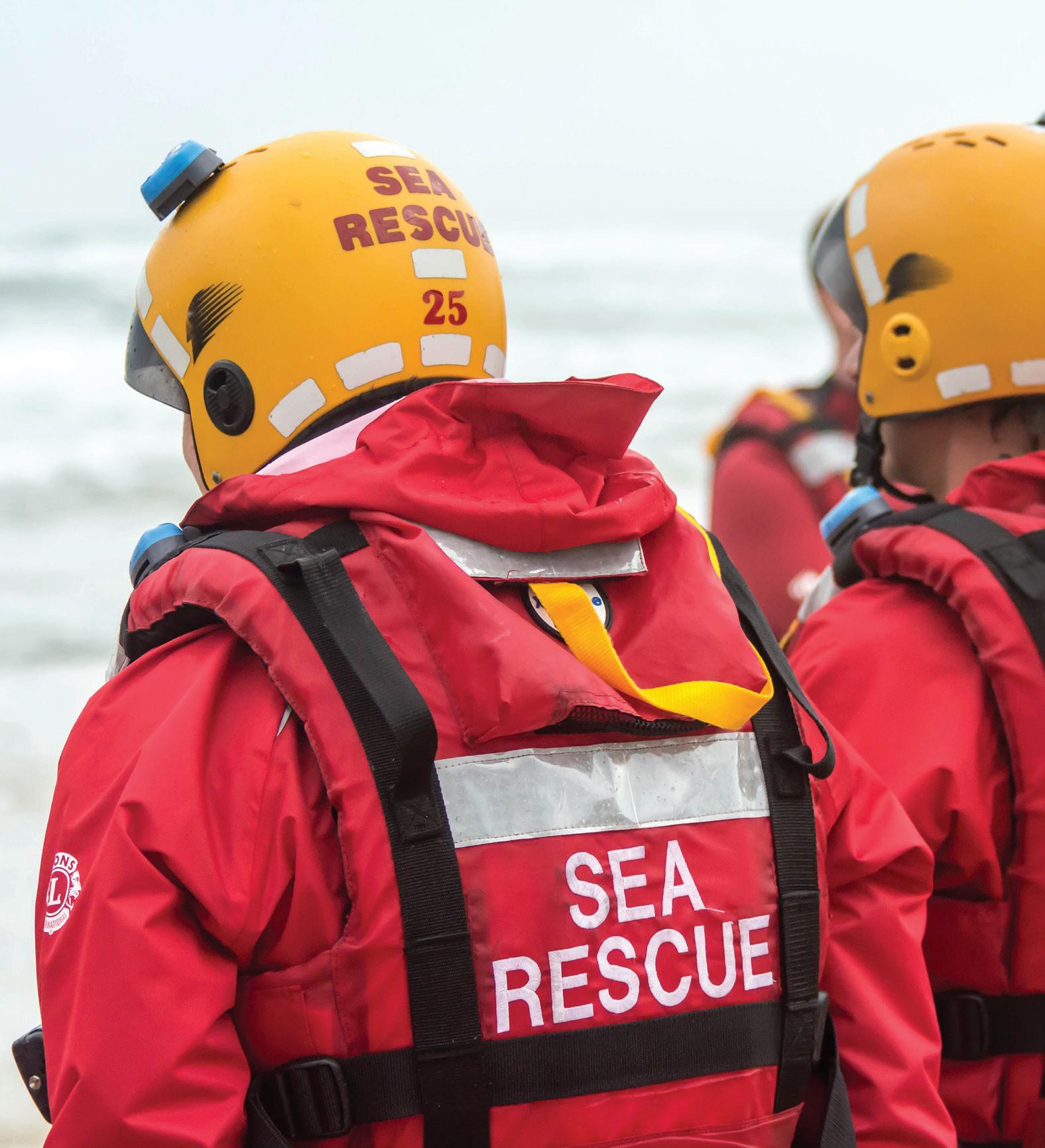

It’s our privilege to support them.Health Risk Managers and Proud Platinum Sponsors of the NSRI www.lifehealthsolutions.org






When a kayaker was reported missing off the frigid waters of Paternoster on the Cape West Coast, Station 4 (Mykonos) mobilised immediately. Rob Mousley tells the story.
BY THE TIME THE paddler crawled on shore, he’d been in the cold Atlantic Ocean for nearly an hour and he was in a very serious condition. ‘He was way beyond shivering,’ says Station 4 (Mykonos) station commander Nic Stevens. ‘If we’d got there even 30 minutes later, the story might have ended very differently.’
The 69-year-old man had launched from Paternoster’s main beach at 10am on 6 September, in a plastic roto-molded holiday kayak. It was a sunny spring day and he’d stripped off to his beach shorts to enjoy the weather while he paddled in the sheltered waters of the bay.
Friends saw him going out and thought nothing more of it…
The first time anyone realised something was wrong was at lunchtime, nearly three hours later. After searching the beach and frantically scanning the sea, someone suggested calling the NSRI and that was when the Mykonos crew were activated.
The team assembled, rapidly hitched the rescue craft Spirit of Rotary East London II to their 4x4 and set off for Paternoster, some 40 minutes up the coast.

As they drove, they discussed what might have happened. The lone kayaker had possibly been
blown north from the beach by a fresh southeaster, and if he’d gone beyond the sheltered water near the beach, he’d be fighting very rough sea conditions, with ocean swells of 3 metres.
The best-case scenario was that the pad dler had managed to stay near the shore, but with the wind blowing from the south east, he could have been blown out to sea. And 7km north of Paternoster, a rocky reef extends nearly 3km out from the shore and on a day like this, the whole area would be a maelstrom of violently breaking waves. If by some miracle the paddler survived that, he’d be heading out into the open ocean as the coastline curves east at that point. The possibility of finding a tiny craft in the open Atlantic? It doesn’t bear thinking about. And the cold was a huge concern too.
The average water temperature in Pater noster in September is around 14°C and someone in the water wouldn’t last long before succumbing to the cold.
The NSRI crew prepared to launch from the Paternoster beach. Having considered the currents, the wind, and the waves, they planned to start their search some way up the coast towards the Groot Paternoster Point. Observers on shore would scan the sea using binoculars.
Then another call came in, this time from some visitors staying at the Groot Paternoster Private Nature Reserve. A man had been found on the shore, and he appeared to be injured.

Now the challenge was how to move the casualty from the beach, miles from any road, to the ambulance. The NSRI 4x4 crew started off down a very rough beach track, making their way over sand and rocky outcrops north towards the nature reserve. The journey, a frustrating balance between speed and caution, seemed to take forever.
Sure enough, it was their man. He’d been blown out to sea and had eventu ally capsized behind the backline, some 5km up the coast from Paternoster Beach. Unable to climb back onto the kayak, he’d spent nearly an hour in the frigid water before finally managing to swim to shore. He’d been spotted by the holiday makers at the nature reserve, and they’d done the best they could to wrap him in jackets after calling the NSRI.
Relieved that they weren’t dealing with two separate incidents, the rescue crew swung into action. While not actually in jured, it was obvious that the casualty was severely hypothermic and their top priority
was to warm him up. Wrapping him in a foil blanket, the NSRI crew loaded him into their vehicle and set off back down the bumpy track to the ambulance.

‘His core temperature was way down,’ says Nic. ‘When they got him to hospital, they put him in a heated bed bag and onto a drip.
‘But he was lucky,’ Nic adds. ‘His temper ature was almost at the point of no return.
‘We’d like to thank the bystanders who spotted the casualty; without them we might not have got to the scene in time.’
The NSRI urges kayakers and other sea farers to take adequate precautions even when conditions seem mild. Conditions near to shore can be deceptive, especially when the wind is blowing offshore. Kay akers should always wear a lifejacket and should consider other safety devices such as body and paddle leashes.
In particular, the NSRI recommends the use of SafeTrx, a free-to-use tracker app that can be installed on any smartphone. SafeTrx is monitored 24/7 by the NSRI Emergency Operations Centre and has been critical in many rescues around the world. SafeTrx takes the ‘search’ out of search and rescue.
▶ Go to www.nsri.org.za/water-safety/ safetrx/ for more information.

Donnalee could have drowned that day. Instead, she was saved by 4 brave, young school friends who pulled her out of the dam where she had been swimming. Remembering the CPR skills taught to them by an NSRI water safety instructor 3 years earlier, they brought Donnalee back to life. #ItsWhyWeDoWhatWeDo

We take a deep dive into white shark activity along our coastline and show how awareness of their habits and habitat can go a long way to saving their and our lives. By Cherelle
LeongPLETTENBERG BAY ON THE Garden Route is a prime holiday destination, with kilometres of pristine white beaches, excellent surfing and a host of other outdoor activities and attractions to explore. So when news circulates that beaches are temporarily closed because of increased shark activity in the area, people tend to be concerned. It’s a very common human reaction. Sharks have been unfairly represented as creatures to fear by Hollywood and mainstream media for decades. The sensationalisation of shark incidents unfortunately has been perpetuated into our psyche in a negative way.
While it’s understandable to feel this way, the reality is that humans are a far greater threat to sharks than sharks are to us. One only has to look at an area known for its dense population of sharks to understand why.
Gansbaai is a small town in the Overberg on the Western Cape coastline known for its large population of white sharks. For years this is what made the sleepy fishing town a major tourist attraction – the opportunity to be submerged in a cage and encounter white sharks up close, underwater. It’s a thrilling and fascinating expe-

rience. Many who have completed cage dives come away awed by the magnifi cence of the white shark. But it’s not just a tourist attraction. The shark encounter charters also participate in shark research, recording the number of sightings and sizes of the sharks that are seen. This information is shared with various research groups and organisations involved with monitoring shark populations and behav iour around the globe.
Between 2011 and 2013, shark sight ings increased steadily, signaling a healthy population. But after 2013 the data shows a different story – a steady decline in shark sightings. This is cause for concern on several levels. From a human and local economic perspective, it has a big impact. Gansbaai is an out-of-the-way destination that’s on the world tourism map only be cause of the shark encounters. The indus try contributes an estimated R36.5 million in annual revenue excluding complementary hospitality revenue such as accommo dation, transport, guiding or dining out. In 2016 a 21-day absence of shark sightings was estimated to have caused a loss of R1.5 million for the region.
These were the findings of a study conducted by the University of Exeter published in the South African Journal of Science in 2019. The study sought to review the data and try to find an expla nation why fewer sharks were being seen. Observations were made of significant ecosystem changes. However, the human factor showed to be far more influential regarding the 69% decline in white shark sightings over that four-year period. Overfishing, illegal fishing and bycatch (when
sharks are accidentally caught in trawling and fishing nets) have had a significant impact on both white sharks and their prey, resulting in a decline in numbers.
Independently, more recent reports of a pair of orcas predating specifically on white sharks in the False Bay area have been confirmed. Nicknamed Port and Starboard, because of the shape of their dorsal fins, these orcas have a habit of targeting white sharks for the purpose of feeding on their livers. This grisly theo ry has been backed up by the discovery of several white shark carcasses in False Bay and more recently by drone footage filmed near Gansbaai of an orca hunting and killing a white shark. The white shark is viewed as an apex predator and this unusual behaviour by orcas has marine scientists looking more closely at factors that could be influencing orca behaviour as well as the impact on white shark popula tions. It could also account for the reduced sightings of white sharks in False Bay and more frequent sightings further up the coast towards Plettenberg Bay.
White sharks have been recorded migrating as far as Australia and back to South African waters, and are known to be present all along the South African coast line. Testament to this is the large number of white sharks reportedly killed in shark nets by the KwaZulu-Natal Sharks Board. Between 2013 and 2017, this caused a reduction of 64 in the overall white shark population. Considering that at its highest the white shark population was just over 550 individuals, this loss is significant. While it’s important to keep swimming beaches safe, there is a strong realisation
among marine scientists that unless fishing practices change and environmental man agement strategies change, there is a very real threat of extinction for the white shark. Following the increased white shark population and recent shark bite inci dents, the Bitou Municipality is engaging with a number of stakeholders to find a solution. It’s not an easy task. There are many concerns from various entities and communities and there is no simple solution. Some of the considerations under discussion are whether to install barriers that would prevent sharks from entering the swimming areas. However, the type of barrier cannot be one that could trap and further reduce shark populations, as this would hinder conservation efforts. In Fishhoek, experiments were conducted in 2021 with an alternate type of barrier that could be deployed or removed as needed. Alternative technologies include electromagnetic pods that repel sharks and barriers that resemble kelp forests. In Cape Town, Shark Spotters has partnered with the local municipality to man lookout points above Muizenberg, Fishhoek and Noordhoek beaches. From these elevated vantage points it’s easier to spot white sharks and alert bathers and surfers to the presence of sharks in the area. This is done by way of flag signals and announce ments from lifeguard towers.
There is an urgency to find a solution. Plettenberg Bay is known as a beach des tination and having safe swimming areas is critical to keep attracting holidaymakers. But there is an element of beach safety that rarely makes news headlines and puts far more holidaymakers’ lives at risk than
increased shark activity in an area. That is drowning as a result of people being caught in rip currents.
On almost a weekly basis NSRI bases around the country receive calls reporting people being swept out to sea. It’s one of the reasons the Pink Rescue Buoys were initiated. Having a rescue flotation device on the beach, freely available for anyone to grab and assist someone who is in difficulty, is saving lives. The statistics on drowning are alarming, with an estimated 1 500 drowning-related deaths occurring in South Africa each year. Compared with the number of fatal shark incidents that have occurred, rip currents represent a far greater risk to beachgoers.
These statistics align with international findings. In the US, the Florida Museum, which houses a global record of shark incidents, lists 17 more probable causes of death. There’s a 1 in 5 risk of heart disease, a 1 in 7 risk of cancer, and a 1 in 3 306 risk of drowning. Comparatively, the risk of a fatal injury resulting from a shark incident is 1 in over 4 million.
One of the reasons for this is that, as humans, we don’t naturally share our habitat with sharks. They live in the ocean while we mostly reside on land. Yet swimming, surfing, paddling and sailing are all activities that are enjoyed on coastal waters – and that does place us in their habitat. Raising awareness about sharks and their known whereabouts is important, especially when larger con centrations of white sharks are confirmed in specific areas. At the same time, we should remember that there are far more dangerous elements to the ocean that are
Swimming, surfing, paddling and sailing are all activities that place us in the shark’s habitat. Raising awareness about sharks and their known whereabouts is important, especially when larger concentrations are confirmed in specific areas.
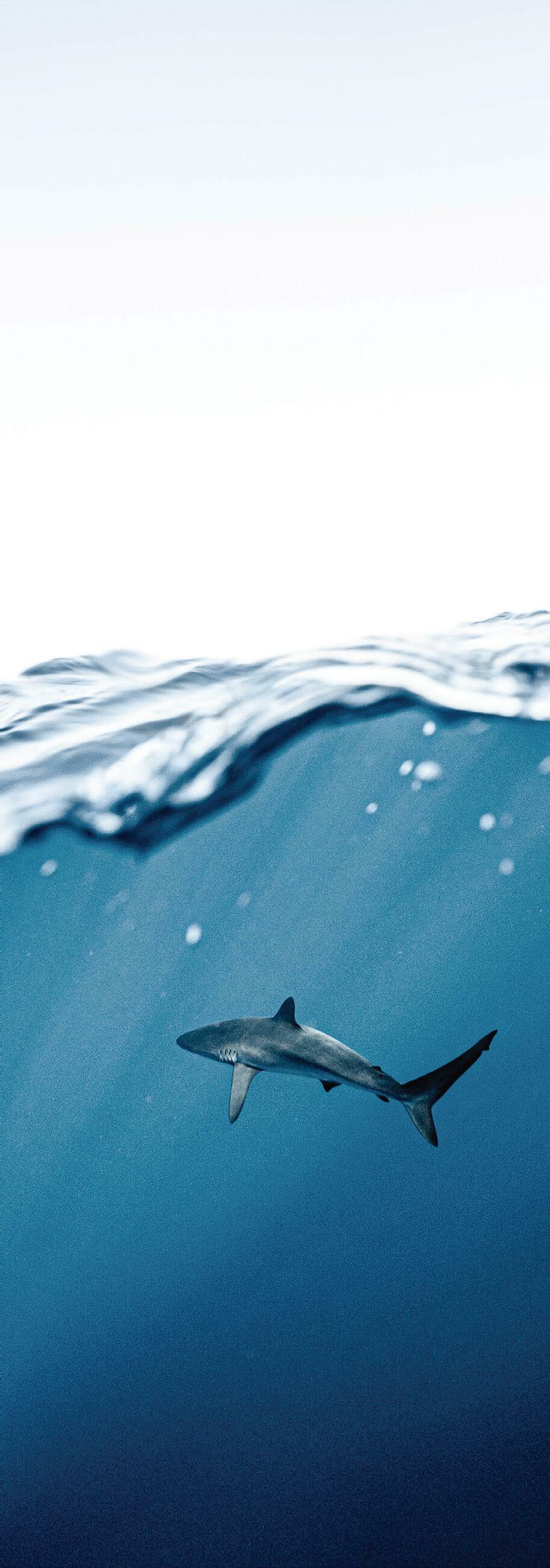
responsible for significantly more deaths. It’s not uncommon for fishermen to be washed off rocks by big surf or for people who think they’re safely standing in the waves to be pulled out of their depth by rip currents. These incidents happen swift ly and frequently have tragic outcomes. As measures are put in place to create safe swimming areas, it is important to take a holistic view of water safety, factoring in the risks, frequency of incidents and likeli hood of them occurring. This approach can help ensure that resources are concentrated in the areas that can have the greatest impact on saving lives.
Every death is tragic, whether by drown ing or because of a shark incident. The higher concentration of white sharks on the Garden Route increases the statisti cal chance of shark encounters occurring. Equally, an increase in the number of holidaymakers increases the risk of potential drownings. Finding a solution that saves lives while still allowing people to enjoy the beach and seagoing activities is important. It will require close collaboration among all stakeholders. Specifically focusing on education and increasing public awareness of potential dangers of an area goes a long way to reducing incidents. Most swimmers and surfers are aware of the risks of the ocean and are conscious of the fact that they enter what is essentially the natural habitat of many marine species includ ing sharks, seals, dolphins and turtles. The majority of encounters occur without incidents or injuries. Respecting the ocean and its inhabitants and being cautious when there’s a known risk can make a significant difference in saving lives.
After receiving calls about a seal with rope around its neck, Station 17 (Hermanus) decided to investigate. After repeated attempts to disentangle the animal proved futile, the crew had a lightbulb moment. Cherelle Leong tells the story

AT THE NSRI WE ARE CALLED to save lives on South African waters, and sometimes the lives are those of marine animals. It might be a seal with rope wrapped around its neck, a turtle entangled in a discarded net, a beached dolphin or a whale in distress in the open ocean… These are disturbing situations and they’re becoming increasingly common. It is estimated that there are more
than 180 000 000 tonnes of plastic in the world’s oceans, of which only 1% floats on the surface. The sea mammals, reptiles and birds found entangled are just one aspect of a much bigger environmental problem, and a harsh reminder that we all need to be invested in helping to clean up the planet. It’s rewarding when we can help reverse some of the damage, even if it’s just one rescue at a time.
Station 17 (Hermanus) had been re ceiving reports from various members of the public for about three weeks of a seal with rope wrapped around its neck. Each time they’d dispatch crew to the scene, but they’d be unable to get anywhere close to it. The seal was understandably wary of humans approaching it, and whenever the NSRI volunteers came near it, it dived into the sea and swam away. It was an adolescent seal with several strands of rope wound around its neck. If the rope was not removed, there was a good chance
After every failed attempt, they would discuss what they could do differently. Trying to corner or catch the seal was out of the question, so they needed to be able to cut the rope from a distance.
that, as the seal grew to full adult size, the rope would become increasingly tight around its neck, possibly even cutting into the skin and restricting the seal’s breath ing. With this in mind, the Hermanus crew knew they had to make every effort to try to cut that rope and free the animal.
As they had already discovered, get ting close to the seal was very difficult. It became a game of cat and mouse as the crew experimented with various tactics to approach the seal without alarming it. The seal had proved to be far too alert and the crew couldn’t come near it. After every failed attempt, they would discuss what they could do differently. Trying to corner or catch the seal was out of the question,
so they needed to be able to cut the rope from a distance. It was decided that the cutting knife from the whale disentanglement kit might just be the right tool for the job. This instrument is a curved V-shaped knife with a sharp serrated blade on the inside and rounded edges on the outside, to prevent injuries to whales during disentanglements. Most significant in this case, the knife is attached to a long pole that makes it possible to cut through rope effectively from quite a distance.
This time when the call came in that the entangled seal had been spotted on the dolosse at the New Harbour, the crew were ready to respond with the whale disentan glement equipment. Based on previous ex perience, they knew that if the seal spotted them, it would disappear again. With one person keeping a lookout from a distance and monitoring the seal’s movements, the other crew members carefully snuck up behind the seal, cutting knife at hand. They didn’t have to get too close – just close enough to slip the blunt end of the knife under the rope. They knew they’d only have one chance. They had to be quick and they had to be accurate. Cautiously and with steady hands, they moved in and in a split second had the knife under the rope. The minute the seal felt that touch, it dived away. But the rope had caught on the knife and the motion created enough tension to cut through it. The seal disappeared into the surf, leaving the sliced rope behind, and was free at last.
For more on what to do if you encounter a marine animal, bird or reptile in distress, please see nsri.org.za/2020/11/what-todo-if-you-find-a-marine-animal-in-distress/
▶
EARLIER THIS YEAR I went to dinner at friends. There were numerous couples there, all with small kids, and I was talking about my work at Sea Rescue, as well as the medical drown ing research I do with the International Drowning Research Alliance (IDRA).
One of the parents who was listening told me about an incident that happened a few months before, at a child’s pool party. ‘One of the children had a near drowning. They pulled the child out of the water – he was coughing, he was incredibly tired, but after about an hour he was himself again and back to having fun!’ By this time, some of the other parents had started listening to our conversation.
I turned to the person and said, ‘You know that child was still drowning for that full hour after he was pulled from the water?’
The room went quiet and the conversa tions in the background stopped – under standably so, it was quite the statement. The parents that had been chatting around us were now looking at me, a bit shocked. Some may not have been quite convinced by what I said. I later found out that most of them had had a similar experience in the recent past.
‘But the child was alive and, apart from being tired and having a cough, he was fine. Isn’t drowning when you die?’ the parent responded.
This is not the first time I’ve heard this.
Contrary to popular belief, drowning doesn’t stop when a casualty is out of the water.
NSRI’s head of Lifeguarding, Stewart Seini, tells us more.

When it comes to drowning, it is important to understand that drowning is not the outcome, but the process the patient goes through that ends up either being fatal or non-fatal. This process starts with res piratory impairment from submersion or immersion in water and the outcomes are simple. You either drown and survive with or without a degree of brain injury, which is referred to as a non-fatal drowning. Or you drown and die, which is referred to as a fatal drowning.
Think about anyone you know who has had a heart attack or a stroke and survived. We don’t say the person had a near heart attack or a near stroke. The same applies to drowning. There’s nothing ‘near’ about what has happened to that child at the pool
party, or to anyone else who has had a drowning incident and was conscious after wards. In simple terms, the child drowned and survived. The misconception tends to be that once the person is out of the water and they seem okay, the drowning incident has stopped, and we mistakenly call such an incident a near drowning.

If we look at what was happening to that child, he had a small amount of water in his lungs that was causing irritation and alveolar damage. This resulted in a decrease of oxygen absorption, which in turn, deprived the brain of oxygen. Con sequently, the child had a cough, and was irritable and tired. What the child really needed was supplemental oxygen.

We always teach our rescuers that the patient doesn’t stop drowning when they are on the boat or on dry land – the patient stops drowning when they get oxygen to the brain.
Drowning is a lack of oxygen to the brain, with lung complications. We don’t use the terms near drowning, dry drowning, delayed drowning or secondary drowning any longer, because the drowning process begins when there is respiratory impair ment, no matter how small, and doesn’t stop until the drowning process has ended by the brain receiving a sufficient amount of oxygen. Secondary to this, high-flow supplemental oxygen allows the surfactant in the lungs to regenerate, enabling the lungs to transfer oxygenated blood to the brain and vital organs. Because the term near drowning or sec ondary drowning has been used so often in the past, the misconception has been created that the drowning incident is over when the person is out of the water, is conscious and seems fine. The assumption is that the person is probably acting dif ferently because it was a traumatic event, and that they simply need some time to ‘walk it off’ or rest. But the reality is that the person needs supplemental oxygen to re-oxygenate the brain. We always teach our rescuers that the patient doesn’t stop drowning when they are on the boat or on dry land – the patient stops drowning when they get oxygen to the brain.

The other misconception is that the lungs fill up with water. But we typically see very little water in the lungs. Yes, that small amount of water that enter the lungs does cause problems. Oxygen uptake is decreased due to the alveolar damage, and this causes a lack of oxygen to be deliv ered to the brain. So when the paramedics arrive or you take the child to hospital, the immediate treatment is supplemental medical oxygen – and it’s not only to treat the injury to the lungs, but also to get oxygen to the brain as quickly as possible. That’s why when the child I mentioned at the beginning of this article was coughing and feeling incredibly tired, he had a lack of oxygen to the brain, causing him to be tired and irritable. He was in fact in need of additional medical treatment.
Luckily, in his case, the incident wasn’t too severe: he was pulled out of the water quickly having very little water enter his lungs and after an hour of being able to get sufficient oxygen to the brain, he was fine, although the surfactant in his lungs damaged by the water probably took about a day to regenerate fully. But many people aren’t this fortunate, and the injury to the brain can be severe enough to last a lifetime.
With summer around the corner, children will be attending pool parties; families will be having braais at the poolside, camping next to a river/dam, or going to the beach. It’s so vital that, when they do, there is a dedicated person to watch the kids in the water and know the signs of a person that is drowning.
We are so used to the movies, where someone who is drowning would be splashing on the surface of the water and calling for help, generally making a big scene – but in most cases drowning is silent and there is no splashing or calling for help. The person usually looks like they are treading water but making no headway, their body would be vertical in the water, mostly, with their head tilted back. The brain would go into survival mode by prioritising muscle movements to keep the body and head above water –the person won’t always be able to call for help and might not even respond to you if they are in trouble, because their brain is focusing on the task at hand, which is to keep the head above water. After a certain amount of time, usually 20-60 seconds, the person’s head would start dipping below the surface. It is a common occurrence for drownings to happen among groups of people without others being aware of it, because the individual in trouble does not act like drowning victims we see on TV and in films. That’s why simply being near the pool when kids are in the water is not the best prevention method – it is much more
effective to have a dedicated person (even taking turns to supervise in shifts), because they can watch out for those silent signs of drowning.
If you suspect a child has had a drowning incident, look out for the following common signs. If they display any of these signs or if you are unsure, call an ambulance or get the child to hospital as soon as possible:
Coughing
Vomiting
A small or large amount of foam from the nose or mouth
Shortness of breath
Chest pain
Dizziness
Behaving out of character
Tired
Confused
Irritable
Aggressive
The story about the child who had a non-fatal drowning is all too familiar; we all know someone, ‘a friend of friend’, who has experienced a similar situation. Some children have survived and some have not. The purpose of this article is not to scare parents from letting their children swim, attend pool parties or enjoy a beach day, but to increase awareness and under standing, and to help identify the symptoms of non-fatal drownings.
It’s what we do.
Fun, games and lessons for our younger members.
1. You can’t use a word that Is already there like ‘drown’, ‘sea’, ‘rescue’ or ‘prevent’.
2. The words must be real words, not made-up words like ‘nio’ or ‘sten’.
3. You can use the letters as many times as they appear in the above
There are a lot of letters here, but there are some rules.
words, so you can use E four times if you choose to play with NATIONAL SEA RESCUE INSTITUTE.
4. You get 1 point for every word and 5 bonus points if the word you find is about water safety or the sea.
5. Play with a friend and see who wins. You have 10 minutes..... GO!
We’ve made grids for you so you can see the letters you can use.
Nev and Peggy are at it again... Peggy wants to swim and Nev is trying to make her stop. Take a close look at the two pictures, and see if you can spot the differences between Picture 1 and Picture 2. The answers are below, but don’t peek!
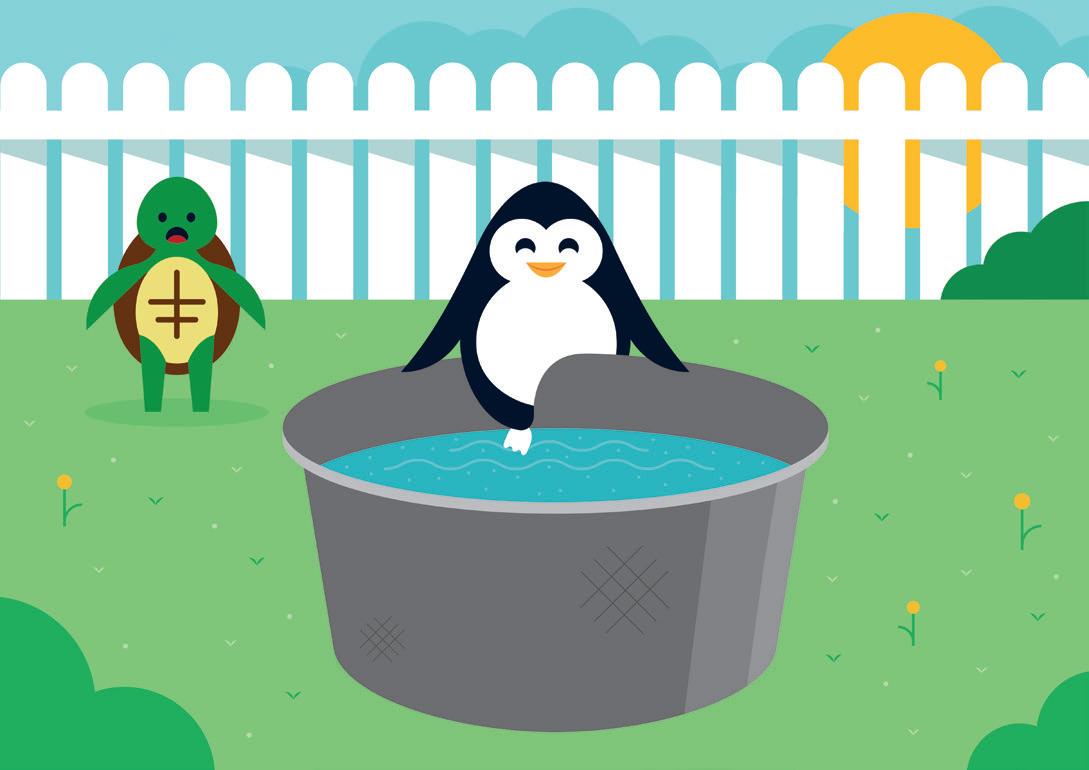

Picture 1
Picture 2
ANSWERS: In Picture 2 the following are different: 1. Cloud is missing 2. Nev’s chest colour is different 3. The fence is missing a shadow 4. Peggy’s tuft of hair is missing 5. Hedge at the fence is missing 6. Water ripple is missing 7. Peggy’s foot is a different colour 8. A flower is missing 9. Tub shadow is missing
Finish each sentence below and create your own perfect day at the beach. One hot morning we We packed After that Finally


ALPHA CREW HAD ALL three vessels on the water for a routine training exercise. The plan was to practise a shore-based medical scenario, stablise the patient and then extract them from the shoreline. ‘Patient’ and ‘medic’ had just been dispatched to the beach using a JetRIB when a call came from Spencer Oldham, Station 8 (Hout Bay) station commander. There had been a report of a medical emergency at Sandy Bay and crew were to stand by for a possible call-out. While investigations were made, the shore-based crew were called back from the beach. We were fortunate to have an advanced life support (ALS) paramedic and crewman Storm Schumann training with us that day. Class 4 Coxswain Warrick
Bristow ferried the two crew to the fastresponse 7.3m RIB Albie Matthews (call sign Rescue 8 Alpha) and all three vessels headed out the bay.
There was a relatively big swell run ning and the route to Sandy Bay involved passing through an area known as the washing machine, because of the way the swell bounced back off the steep shore line. Recently qualified Class 3 coxswain Chris Westcott was at the helm and made excellent time getting to Sandy Bay. Upon our arrival on the scene, it was confirmed that there was indeed a critical medical incident – a surfer was lying on the beach surrounded by concerned bystanders.
As duty coxwain, I took over the helm from Chris – a seasoned rescue swimmer
– as he and Storm prepared to swim ashore with the medical kit. Large waves were dumping on the shoreline, but the JetRIB was able to drop them 20m from the beach. The casualty was a teenager who had been surf ing with friends. A wave had dumped him in the shallows, wedging the back of his board into the sand and dumping him on top of it. In the process he’d been impaled under his armpit by the front of his board and was bleeding severely. Fortunately one of the bystanders on the beach was an intermediate life support (ILS) paramedic. He had initiated care, prioritising stopping the bleeding. Storm’s assessment revealed that while it was a critical injury, the artery hadn’t been severed. With swift medical
A wave had dumped him in the shallows, wedging the back of his board into the sand and dumping him on top of it. In the process he’d been impaled under his armpit by the front of his board and was bleeding severely.
care, the patient could make a full recovery. Skymed arrived on scene while the patient was being stabilised, and then transported the patient to Groote Schuur Hospital.
Opposite: NSRI crew train with a specialised capsize dummy vessel.
Above: Station 8 (Hout Bay) crew attended to a real-life emergency at Sandy Bay during a routine training session.
It’s uncanny how often a scenario that crew are training for becomes a reality in Sea Rescue. The story above is a prime example. It’s one of the reasons our crew have to be committed. It takes a minimum of 50 hours’ practical sea training and even more hours of theory just to qualify as a crew member. And that’s just the start of the learning process. No two rescues are ever the same and each is an experience that teaches you more. Seven years ago, Head Office identified the need to broaden training ex periences in Sea Rescue and created a dedicated nationwide training de partment. Headed up by Graeme Harding, former station commander of Knysna, this department is currently supported by four full-time training officers. It’s an incredibly rewarding job but it’s anything but glamorous.

In the first nine months of 2022, the team drove more than 48 000km between bases around the country. That doesn’t include the air miles accumulated travelling to international rescue conferences.
In June, Graeme attended a Mass Res cue Conference in Gothenberg, Sweden. Earlier in the year, Sea Rescue had been instrumental in assisting hundreds of people in KwaZulu-Natal who had to be helped and evacuated from their homes and vehicles after severe flooding.
While this is one scenario of mass rescues, more challenging rescues could involve cruise ships that navigate South Africa waters with thousands of passen gers on board. These types of events are infrequent, yet rescue crews need to be prepared for every possible rescue. Creating standard operating protocols (SOPs) requires looking at internation al search and rescue best practices and adapting them to resources that are available locally.

NSRI is unique in that it doesn’t operate under a national coast guard like most other international volunteer rescue or ganisations. Although the rescue expertise within NSRI certainly matches interna tional standards, we don’t have the same levels of funding and resources. In Europe, for example, in a mass rescue scenar io, each rescue base may have three or four large rescue vessels available. South African Sea Rescue bases have only one Class 1 rescue vessel each, supported by smaller Class 3 and 4 rescue craft. A mass coastal rescue would require mobilising significantly more resources. This is one of the reasons the NSRI works closely with
other emergency services and maintains close ties with local communities. This kind of support is often critical when major rescues take place. It also means a lot to crews – they’re all volunteers, so they’re part of their local communities too.
Sea Rescue training is constantly evolving and it’s paying dividends. In recent years, the number of requests for maritime ex trications from large ships has increased. Ideally these would be done by helicopter, but helicopters aren’t always available and often cannot fly in poor weather conditions. Maritime extraction training involv ing high-angle rope work has enabled Sea Rescue crews to extricate a number of patients from large ships onto rescue vessels successfully. Our vision to expand this training would involve securing funds for a simulator so that Class 1 coxswains can get an opportunity to experience what it’s like coming alongside a 200m long ship in varying sea conditions. The many successful extrications that have already been carried out with coxswains applying
their skills to the scenario at hand are testament to the depth of training and expertise they benefit from.

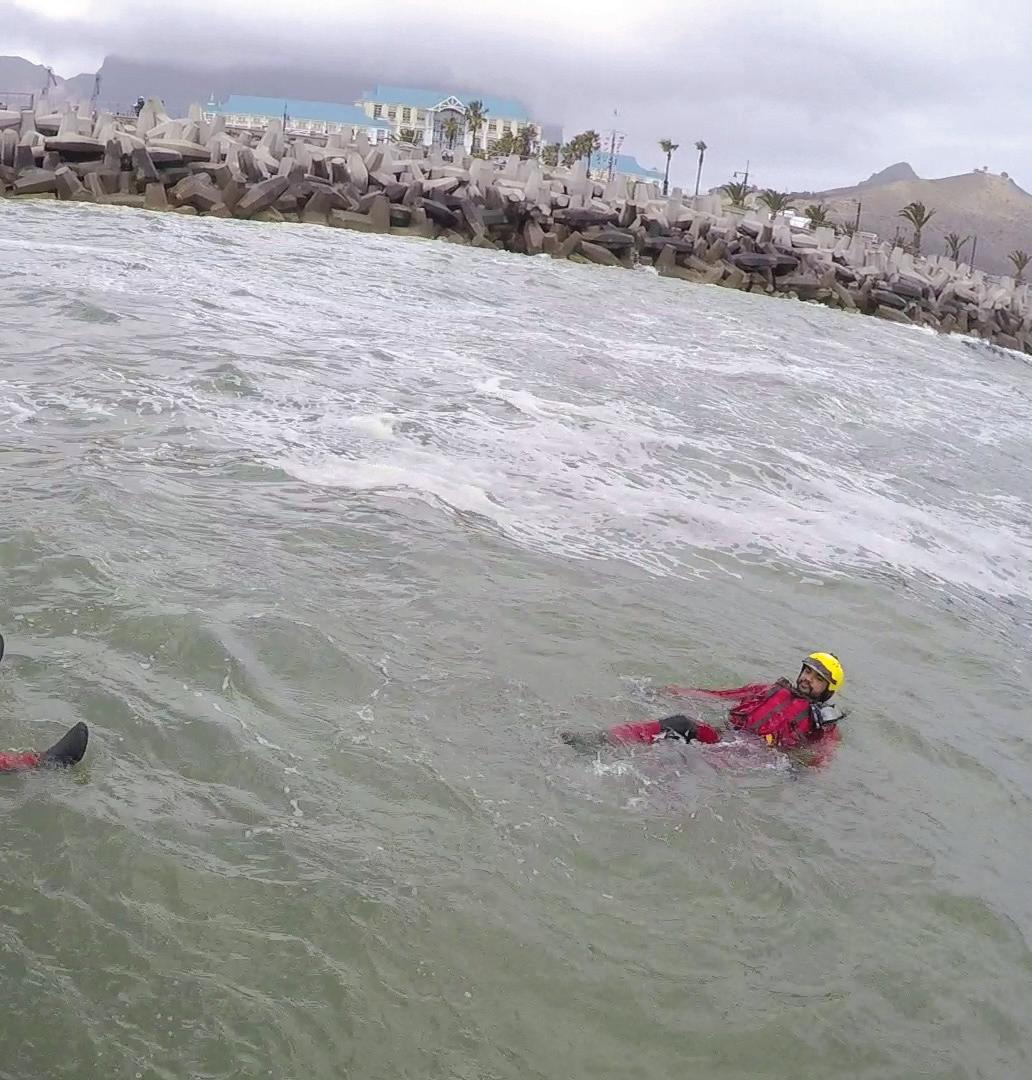
Looking ahead, the Sea Rescue training department plans to expand their resourc es to broaden the reach and frequency of training. They hope soon to employ two ad ditional full-time training officers so that the training teams can operate in two different locations simultaneously. E-learning mod
ules cover most of the theoretical training, and crew members are encouraged to keep up to date on courses. New equipment is being added, including ropes and inflatable river ARCs with paddles that are suitable for reaching areas where flooding is in creasing in frequency. Inter-base training is also strongly encouraged. Each base will do things slightly differently based on the area it operates in and the equipment it has. Visiting other bases around the country is an opportunity to learn and gain additional rescue experience. What’s more, it is an excellent way to develop and refine best practices. Many regional stations collaborate in setting up joint scenario training for up-and-coming cox swains, thereby putting their skills and knowledge to the test and helping to prepare them for their certification assessments.
As younger trainee crew members join the organisa tion, it’s good to be reminded that experience matters. Knowledge can be learnt, but knowing how to apply that knowl edge to various rescue scenarios is even more important. Putting in many hours of training is what makes Sea Rescue crews proficient at what they do, on par with international maritime rescue organisa tions from around the world. Training in all weather, at all hours of the day or night, and for every possible scenario is a key part of being an NSRI volunteer.
The NSRI team spent time with members of the com munity chatting to them about water safety and their needs in the area.
We chatted to NSRI’s Communications and PR Manager, Kuhle Mkize, about her recent trip to Port St Johns, which was as inspiring as it was eye-opening.
THE WILD COAST IS beautiful –anyone who has visited this stretch of the Eastern Cape will tell you that. But the coastline is also treacherous, the inland areas undeveloped and neglect ed in parts, with local communities bearing the brunt of the sadly lacking infrastruc ture. NSRI Communications and PR Man ager Kuhle Mkize joined fellow head-office colleagues, Drowning Prevention Manager Andrew Ingram, Training Manager Graeme Harding, Executive Director of Rescue Services Brett Ayres and former NSRI training officer Herbie Meth, on a trip to the area. ‘Our purpose was twofold,’ Kuhle explains. ‘We were going to install the
By Wendy Maritzsecond Survival Swimming Centre (SSC2) in Tombo, Port St Johns, and then inspect the Mzintlava River that runs past several villages, including eDikidikini.’
Kuhle had seen several news reports on eNCA and Cutting Edge and read an article in the Mail & Guardian about the difficulty vil lagers face on a daily basis getting to school or work, doing their shopping or fetching pensions. She was struck by video footage she saw of a woman being taken across the Mzintlava River in a blue 200-litre drum. The clip shows a young man swimming the drum across the brown water of the river and, on reaching the shore (the town of Flagstaff lies on the other side of the river from

eDikidikini), he takes the sealed lid off and the woman climbs out. When the river is impassable, this is how villagers have to cross it in this particular area. It’s extremely dangerous, as it is a fast-flowing river, and despite pleas and protests from community members, the local municipality has not act ed on its promise to build a bridge for them.
Kuhle chatted to her colleagues, and since SSC2 was being delivered to Noah-Christian Academy in Port St Johns, the team decided to include a visit to eDikidikini as well. ‘We wanted to see what support or assistance we could give the community,’ she explains.
‘Getting there was a mission,’ she says. ‘The roads are narrow and in terrible condition.’ But the team was on a mission to see what they could do to help. Despite the rough travelling conditions, Kuhle not ed how beautiful and green the area was.
‘When we spoke to the community members, the issue of the river crossing was their biggest concern. They rely on transport that leaves for the nearest town of Lusikisiki at 7am and returns at 2pm –the drop-off points are on the other side of the river. Our Drowning Prevention Education Coordinator, Valerie Barlow, has had Pink Rescue Buoys (PRBs) installed in the area,’ Kuhle explains. Valerie is well aware of the challenges communities face – she has often had to negotiate the roads to get to the schools because she delivers water-safety education classes to the learners in the vicinity of Port St Johns.
‘Our meeting with the community was quite fruitful,’ Kuhle says. ‘We concentrat ed on practical ways people can help each other in a water-related emergency. We
offered practical demonstrations on how to use the tools (PRBs), concentrating on showing them how to throw the flotation devices properly, and how to calm some one down in the water. And also never to go into the water to help someone without the PRB. The youngsters were most ap preciative of the training Brett and Herbie gave them, as they are the ones who are helping the people to cross the river.’
Kuhle made a point of chatting to mem bers of the community and the stories she heard were heartbreaking. ‘There are
‘When we spoke to the community members, the issue of the river crossing was their biggest concern. They rely on transport that leaves for the nearest town of Lusikisiki at 7am and returns at 2pm – the drop-off points are on the other side of the river.’
numerous drownings because the area is so remote that help can’t get there fast enough. These people are desperate. It’s not uncommon for bodies to wash up on the river banks. They are buried without anyone knowing who they are or who their families are. After the rain, this river gets so full...’ her voice trails.
Future plans include sending life jackets and special ropes, specifically designed to throw to people who get into difficulty in the water. Currently there are a number of PRBs along the river, but because the NSRI is so invested in drowning prevention, the ultimate goal would be to give the commu nity access to something tangible to help them cross the river safely.
The small town of Tombo near Port St Johns came alive on the day the second Survival Swimming Centre was delivered to Noah-Christian Academy. ‘Everyone was super-excited,’ Kuhle beams. She was informed that the primary school is the first school to receive a swimming pool in the Wild Coast area.


‘When it’s hot, the children swim in the river. Kids do feel a bit of peer pressure, because everyone is going in to cool off. But none of them have ever been taught how to swim. And they don’t know what to do if they get into trouble,’ Kuhle explains. ‘We take for granted that we have pools or access to pools, but these children had never seen anything like the con tainer swimming pool before. The amazing thing is that it was given to them by an NGO and it’s going
to be there for life. It is accessible to surrounding schools and anyone can learn survival swimming.’
This was evident when the principal said she would like to have a lesson, leading her staff by example. Some children were scared and wide-eyed when the instructors helped them into the water, but afterwards said how much fun it was. There are a few simple ways you can save yourself when you get into trouble, and this is what the kids are going to be taught.’
However, it doesn’t begin and end with the children. The survival swim ming skills will be passed on to the entire community, teachers, parents...
‘By the time we left, just about everyone was asking when they could have a lesson. The community buy-in and engagement were amazing,’ Kuhle says. When Kuhle reflects on her visit, she ac knowledges that many of us are sitting with so much privilege. ‘I grew up in the Eastern Cape,’ she says, ‘but I’d never been to the Wild Coast. I heard stories and saw with my own eyes how people are struggling. There is so much beauty there – and so much danger. But we’ve made a small difference,’ she concludes. ‘We made a promise to them and we fulfilled it!’
A high five for an eager learner.
Mlungisi Ndamase is one of two sur vival swimming instructors stationed at SSC2 at Noah-Christian Academy in Tombo, Port St Johns. We chatted to him about his life-saving work with the NSRI. By Wendy Maritz
MLUNGISI NDAMASE FEELS privileged to be part of the team teaching survival swimming skills at Noah-Christian Academy. It’s a perfect fit, as Mlungisi grew up in Mthumbane township nearby, has a background as a lifeguard and is also an NSRI water-safety instructor in the area. He and Abongile Ngxola spend their days educating not only the children but also teachers and other

adults about the basic skills needed to feel comfortable enough in water to get yourself to safety.
‘I decided to become a survival swimming instructor because I felt that I could do more in terms of helping the children and community at large. I work as a water-safety educator and lifeguard and know that training people how to survive when facing difficulty in water is a great life skill that can never be taken away from them. And it’s something they can pass on to their families. This will in turn lead to less drownings,’ Mlungisi shares. So far, Mlungisi has loved teaching the children. ‘The effort they put in is awe some,’ he smiles. He acknowledges that the kids arrive excited but are sometimes also scared before their first lesson. ‘I can see it in their faces,’ he says. ‘But then it’s amazing to see them relax and loosen up by the end of the session. They’re slow ly learning that they will be able to help themselves should they ever have a bad encounter in the water.’
Mlungisi has been encour aged to see how many adults have wanted to learn survival swimming skills as well. ‘The principal, administration staff, teachers and the female caretaker too… Over 90% of the staff are doing the lessons with us,’ he continues. ‘We held a holiday programme and the spouses of the teachers and members of the community also joined, while others came to observe and make enquiries about when the next ‘intake’ would be. Principals of other schools, community stakeholders in the form of members of the Department of Health, a local youth development organisation and a local school for the disabled were among them.’
While the interest in and the need for learning survival swimming are clear, it’s the one-on-one time with the children Mlungisi enjoys the most. ‘Everyone wants a turn. We haven’t got to the lower grades yet. The children can’t stop saying “thank you”,’ he says. ‘They are so enthusiastic and they want to learn more, and ask important questions about getting out of trouble in real-life situations.’
The groups of learners make progress at their own pace; some will need more time in the pool than others, but on average it takes about a month (of three lessons a week) for the learners to feel confident with all four skills involved in survival swimming (orientation, breathing, float ing and moving to safety). But with some children this may take longer.
Mlungisi notes that part of the pro
gramme includes assessments of the learn ers’ skills development. For instance, during a holiday programme lasting two weeks, learners may learn to master two of the four skills necessary. So feedback and con tinued assessments are necessary to equip each learner fully, whether they’re a child or an adult, to feel comfortable enough to implement what they have learnt.
It’s an honour for Mlungisi to be a part of the team. ‘The NSRI is playing a huge role in saving lives and thereby providing futures, because each person whose life is saved will be able to reach their goals and dreams.’
Coming from a lifeguarding background, being a water safety instructor and, now, getting involved with survival swimming have given Mlungisi the platforms to use his skills for a cause close to his heart – help ing to save lives. ‘I can say boldly that I am doing what I love and will forever be grate ful to the NSRI for giving me these skills. I am also learning something new every day.’
Mlungisi pauses, smiles and adds, ‘That includes learning pool maintenance!’

WE’RE happy to announce that the NSRI won an International Maritime Rescue Federation (IMRF) award for its Surviv al Swimming Centres. ‘It’s an amazing win for the NSRI, especially being at the southern tip of Africa... We were up against some of the wealthiest rescue services in the world. It’s a real feather in our cap to have won in the category of Innovation & Technology again,’ says Andrew Ingram, NSRI’s Drowning Prevention Manager.
‘When it comes to the Survival Swim ming Centres [SSCs], what we were trying to achieve is to give free swimming lessons to disadvantaged children in safe water. There are two problems with swim ming lessons. The first is that you need to be able to teach children or adults in water that is safe so that they are not going to be harmed by currents, structures in the water, or dirty water. Secondly, you need to make the lessons free because most
people in South Africa cannot afford to pay for swimming lessons.’
The Survival Swimming Centre concept is a 6m long swimming pool built in the back half of a 12m shipping container. It is completely self-sufficient and includes hi-tech monitoring equipment to ensure safety and high-quality water for the children to swim in.
The NSRI is no stranger to receiving IMRF Awards. In 2016 the organisation was the runner-up in the category Out standing Team Contribution, in recognition of its water safety lessons for children; in 2018 its Pink Rescue Buoys won the award in the category Innovation & Technolo gy, in 2019 the purpose-designed rescue stretcher earned it a runner-up position; and in 2021 it was named the winner of the category Innovation & Technology for the JetRIB, a revolutionary surf rescue craft in collaboration with Admiral Powercats and Droomers Yamaha.

IT was with great pleasure that Station 8 (Hout Bay) Deputy Station Commander and NSRI Awards Committee chairperson Carmen Long presented Camps Bay Primary School pupil Alex Rumbell with a letter of appreciation. Earlier this year, Alex and his father spotted what they thought were two surfskis rolling about in heavy seas about half a nautical mile offshore of Smitswinkel Bay. They alerted the NSRI and kept their eyes on the ocean despite losing visuals of the ‘red objects’ and not seeing any people near them. Station 10 (Simon’s Town) launched Spirit of Surfski II to the area. In the meantime, the NSRI’s EOC had received an emergen cy alert from a SafeTrx user, and even though the signal was lost due to poor reception, it indicated that the Rumbells had indeed witnessed people in trouble.

Alex managed to re-establish visual contact and, with a calm and accurate de scription of their exact location to Station Commander Darren Zimmerman, guided the NSRI rescue vessel directly to them. The letter of appreciation concludes: ‘If not for your quick thinking and keen eyesight, and the calm manner in which you handled the emergency, this outcome could have been very different for the two surfskiers. Thank you for your part in saving two lives on that day.’

CONSTRUCTION of the third NSRI Survival Swimming Centre (SSC3) is well underway, with Pools for Africa having completed fibreglassing the swimming pool. The heart and lungs of the SSC – the Zodiac filtration and Astral heating systems – are being installed and we are days away from putting in the water for a full test of all systems.
With the end of the school year hurtling towards us at full speed, we have identified a school on the KZN South Coast where SSC3 will be deployed and will have it operational by the time the children arrive for the first term of 2023.
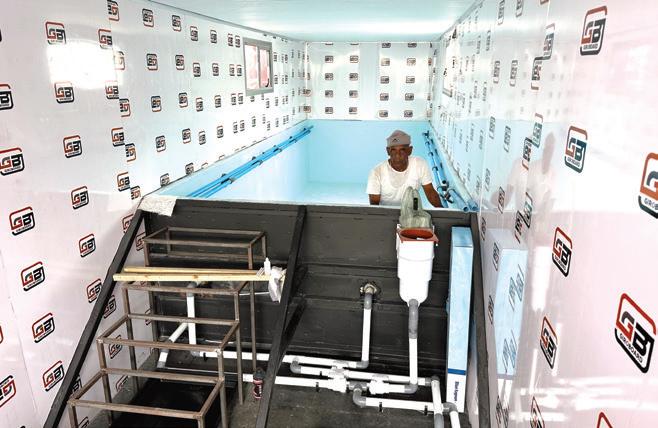
NSRI’S Drowning Prevention Department, headed by Dr Jill Fortuin, remains steadfast in its mission to reach as many people as possible. This year the team reached a remarkable milestone: 3.5 million students educated! ‘It feels fantastic to have provid ed so many lessons and to know that we are making a difference in the lives of so many people,’ says Dr Fortuin, who recently received a long-service award from Lifesaving South Africa.
One only has to look at the programme’s history to see how it has gained momentum since it began in 2006. In that year, 6 500 learners were taught. Six years later, in 2012, the figure rose to 105 025, and to 574 099 in 2019. ‘Our target for 2022 is 600 000 students, and in 2023 it is set at 750 000. We would like to reach 1 million students per year to attain our ultimate goal of educating every child of schoolgoing age in SA about drowning prevention.’


NSRI’S camera project, initiated in 2020, was the first of its kind geared towards sea rescue and beach safety. Elevated cameras overlooking the beach can spot rip currents and sharks, as well as monitor areas where lifeguards are not on active duty. The first PTZ (pan-tilt-zoom) camera was put up in Strand in Cape Town, followed by one each at Bloubergstrand and at Herolds Bay along the Garden Route – all notoriously dangerous beaches. Plettenberg Bay and Buffalo Bay have been identified as the next loca tions for beach camera installation.
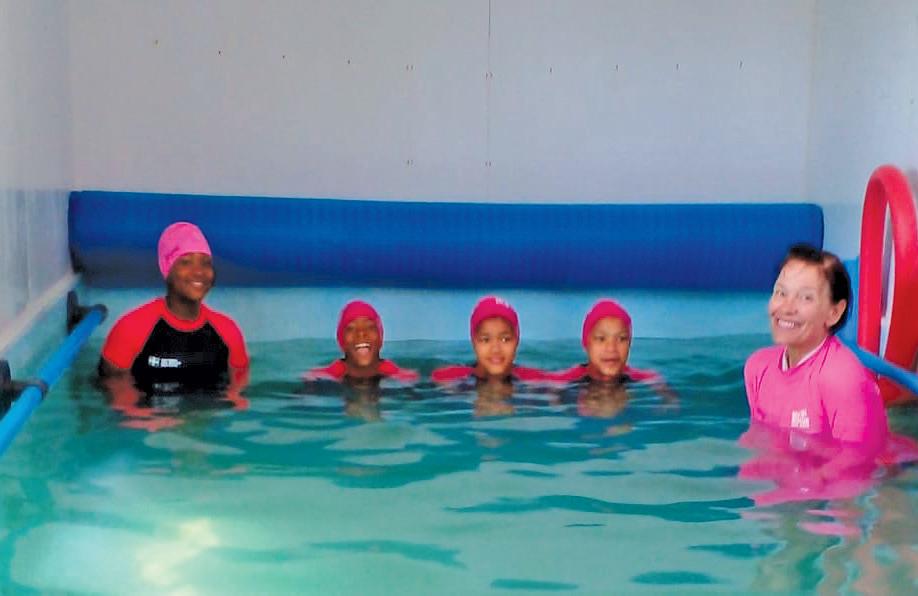

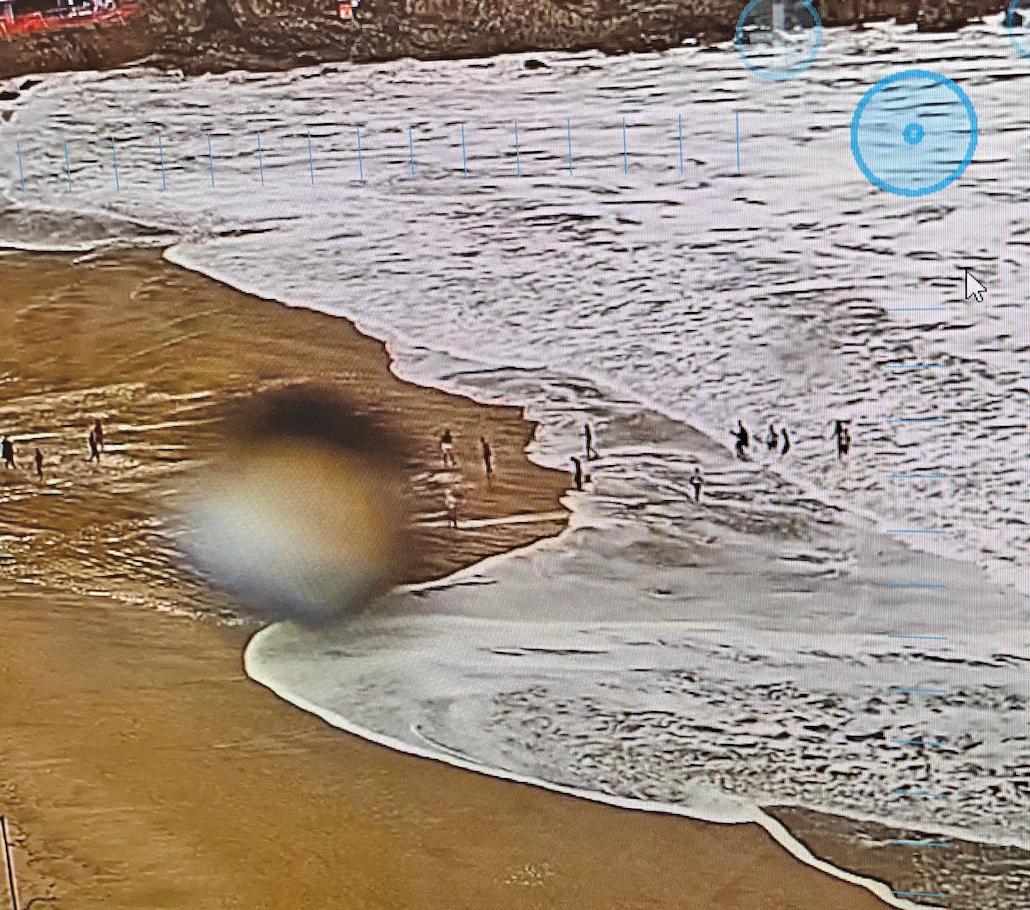
The value of these cameras was illustrat ed recently when children on a school outing to Herolds Bay were playing in the surf in dangerous conditions. NSRI’s Emergen cy Operations Centre (EOC) was alerted to the activity and the beach camera operator monitoring the children noticed that they were in possible danger. A local volunteer was asked to go down to the beach to
warn the teachers, and a potential crisis was averted. Because of the success of the cameras as an intervention tool, Drowning Prevention Manager Andrew Ingram wants to move on to the next phase of his vision: to build a network of beach cameras operated by volunteers in tandem with the NSRI rescue and shore crews. Herolds Bay was selected to pilot the first camera volunteer programme.
Volunteers have already come forward. Once they’ve been vetted and trained, they will work in shifts, mostly on weekends and over holidays, in collaboration with first responders.
’n Hartlike goeiemôre aan almal hier vanaf ons mooie vallei. Vandag wil ons uit die diepte van ons harte dankie sê vir almal se bydrae tot die wonderlike projek wat aan ons kinders die geleentheid gee om lewenslange vaardighede aan te leer en ’n groot verskil in hul lewens te maak. Thank you! Big hugs from all the valley children. Petro Meyer, Drowning Prevention Instructor, Riebeek-Kasteel, Western Cape


WHEN people are informed that they’ve won something, they often don’t believe it! The team had to reassure Mrs Conradie she was the winner, and eventually the cheers and shouts from all the marketers convinced her. Congratulations! The NSRI gives away R10 000 to five lucky donors each month, with three opportunities in April, August and December to win R100 000. To enter, visit www.nsri.org. za/support-us/win-r10000-in-cash/.
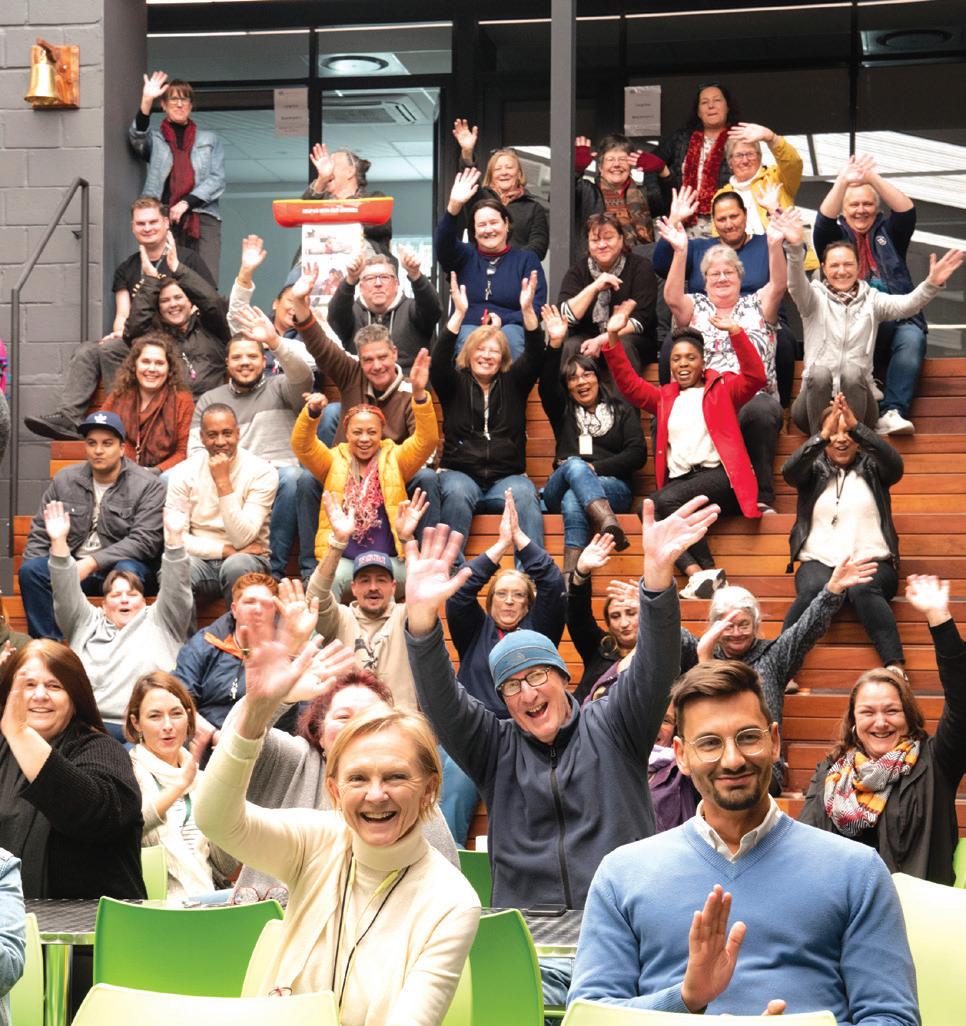

THE blessing of the new 7.6m RIB at Plettenberg Bay took place on Saturday 1 October.
In 2017 the NSRI received a bequest from the Estate of the Late Frank Edwin Courtenay with the express wish that the funds be used to purchase a new rescue
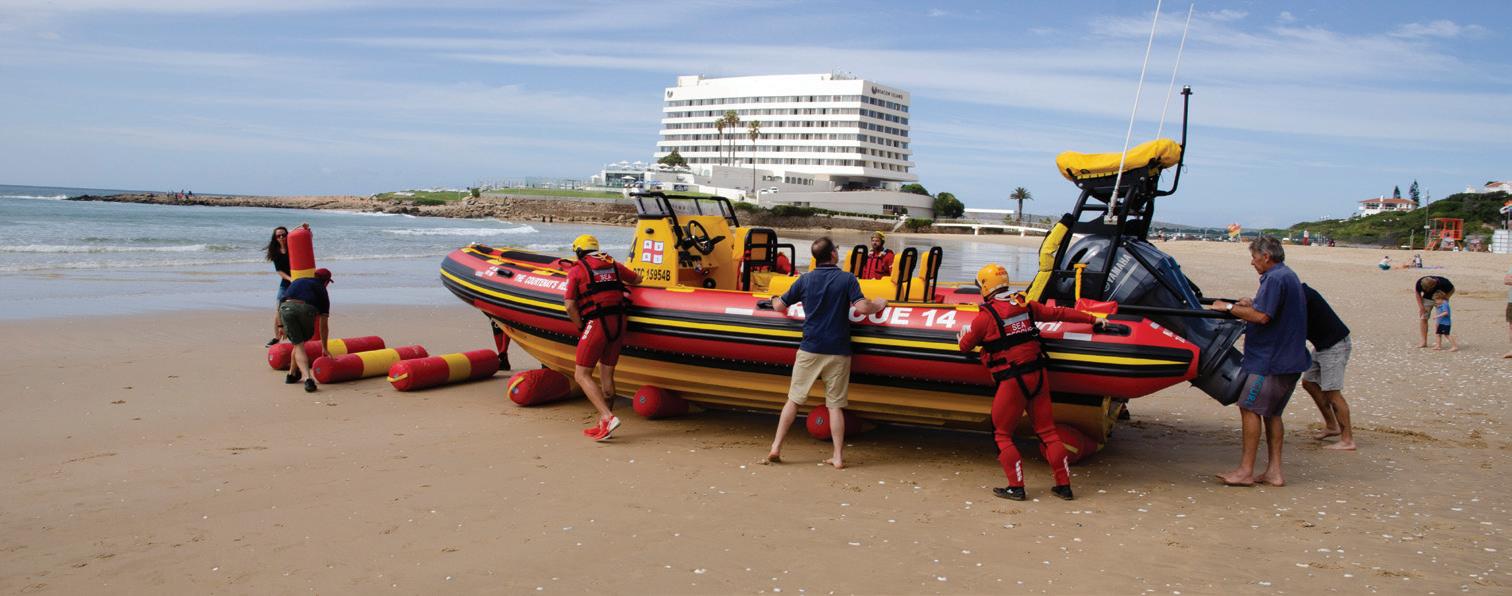
craft for Plettenberg Bay. At the time the station did not require a new vessel and it was agreed with the executors that the money would be ring-fenced for the future. Over the years we have received annual donations from the Barbara and Edwin Courtenay Charitable Trust that were similarly ring-fenced. Edwin Courtenay’s wish became a reality this year and The Cour tenay’s Rescuer was blessed in his honour. Thanks to the Barbara and Edwin Courtenay Charitable Trust for this incredible gift!




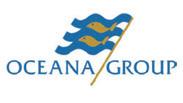

SMD Telecommunications (Pty) Ltd / NCS Resins / Marlyn Vulindlela (Pty) Ltd / AMSOL / Ruwekus Fishing (Pty) Ltd / Producer Ally (Pty) Ltd / Hoegh Autoliners (Pty) Ltd / Press Spinning & Stamping Co / Mix Telematics International (Pty) Ltd / Cohesive Capital (Pty) Ltd / RF Design / HBS Aluminium Systems (Pty) Ltd / VVM Inc / Marine Solutions / A&M Logistics / Richards Bay Coal Terminal / Barpro Storage SA (Pty) Ltd / Denso SA (Pty) Ltd / Resolve Salvage & Fire (Pty) Ltd / Kiddie Rides / AMTEC / Bearfish / Cohesive Capital / Right ePharmacy / United Mining Services Group / Storm Plant Hire



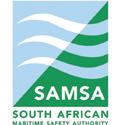
ONCE a year, NSRI Melkbosstrand is given the in credibly unique opportunity to host a 4x4 tour of the Koeberg Nature Reserve. The event is their biggest fundraising event and is so popular that it sells out within hours of going live.



The 2022 event took place on 10 September –perfectly timed for wildflower season. The reserve was in pristine condition and yielded several wildlife sightings for the excited participants. The day was a lot a fun for all involved and, with varying degrees of experience among the drivers, the route took some of them out of their comfort zone while others found it fairly easy.
Our grateful thanks to Mitsubishi Motors for their title sponsorship and to all the suppliers, sponsors and participants for their enthusiasm and ensuring that this is a sell-out event every year.

IN MEMORY OF: Quentin Thöle, Mark Koen, Neville Attree, Geoff Sonnenberg, Darrol Hansen, Tommy Redmond, Brian Brice IN HONOUR OF: Andy and Archie (60th birthdays), Rob Rein (60th birthday), Caroline Beaumont (60th birthday), Dr Van de Velde, Anne Stafford (80th birthday)
ONE OF THE GREAT experiences of the world is to watch albatrosses flying. These consummate fliers soar effortlessly at incredible speeds, one with the ocean and the wind.
They are extraordinarily well-adapted for flight, with long narrow wings perfect for lift and gliding, and a muscle stretching from their breastbone to each upper-wing that allows them to fly for hours without moving their wings. In fact, studies show barely any difference in heart rate between an albatross at rest and one flying in almost all wind conditions except strong headwinds. Some of the larger albatrosses can fly at speeds of up to 127km per hour. Adults foraging for their newly-hatched chicks will routinely cover 1 000km, and many spend their lives continuously circumnavigating the Southern Ocean.
It is generally accepted that there are 21 species of albatrosses, inhabiting all oceans except the North Atlantic. They fall into four groups: the great albatrosses of the Southern Ocean, closely related to

the North Pacific species; and the sooty albatrosses, more closely related to the mollymawks.
The wandering albatross has the longest wings of any bird. Exceptional individuals having a wingspan of 3.6m, and for the family, flying itself is almost no effort, other than when seizing prey or taking off and landing. They are creatures of strong winds and must remain at their roosts or on the sea surface in calm conditions. Most of the larger species need to use a runway to take off. This ungainliness on land leads them to nest on remote oceanic islands without terrestrial predators.
Albatrosses are slow to reach breeding age, some species being 14 years old before they first mate. They are generally monogamous and both parents will share in the duties of brooding and rearing their solitary chick. A single large white egg is laid and may be brooded for up to three months depending on the species. The chicks are hatched covered in down, probably to help insulate them in the
extreme weather of their birth islands, and the parents then begin taking turns to depart on foraging trips to feed the chick. As the chick grows and its nutritional requirements increase, the parents must take longer trips and the chick is left alone for increasing periods. During this time it is vulnerable to predation by predatory birds such as skuas, or starvation, should its parents not return.

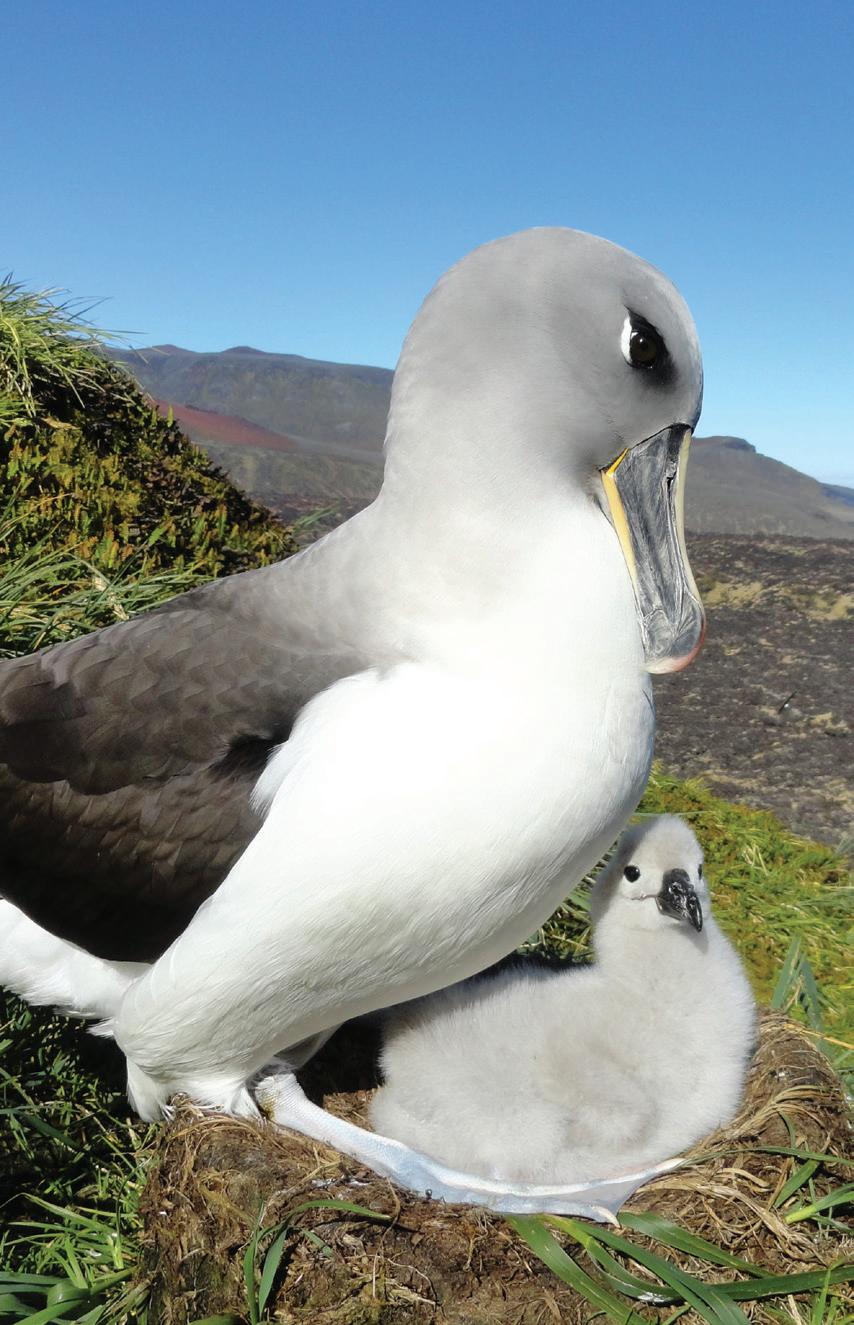
As its defence, the chick can spit a foul-smelling oil, a defence that certainly keeps human researchers at a respectful distance.
As its defence, the chick can spit a foul-smelling oil, a defence that certainly keeps human researchers at a respectful distance.
Once the chick has fledged, the parents head off back into the open ocean on their long voyages searching for squid, fish or carrion, leaving the chicks to learn their trade alone. It seems strange, given the
effort of rearing a chick and the long time period involved: the larger species take up to 13 months to reach fledging, so the adults can only attempt breeding every second year. Indeed, about half of all successfully fledged chicks do not survive longer than a few months. Perhaps life as an albatross is unteachable.
Young albatrosses must learn the secrets of the winds and the waves, as well as how to find widely-dispersed food sources in the open ocean. For those that do, they are long-lived birds, generally living for 30 or 40 years. The oldest albatross known was first ringed as a breeding adult in 1956 and she is still known to be raising chicks today. It is thought to be possible that some wandering albatrosses may live for a hundred years or more.
In a world without humans, albatrosses were able to thrive. Successfully fledged birds have few natural enemies. But these days, when at sea, they are at risk from accidental plastic ingestion, particularly in the North Pacific. Hake trawling and longline fishing are also problematic. Mitigation
methods such as bird-scaring devices for hake trawlers and deploying long-lines at night have proved very successful when used and offer hope that albatrosses can continue to thrive, at least in oceans that are not over-fished.

On land, however, where they must raise their chicks, the story is a little different. Although humans no longer hunt them for their eggs, feathers and meat, introduced pests, such as rats and mice, are taking a serious toll on their numbers. Mice on Gough and Marion islands eat the albatross adults as they sit on their nests, and also the chicks once they hatch. As a result, breeding success has been extremely low.
A recent mice eradication programme on Gough, though ultimately unsuccessful in ridding the island of the pests, has resulted in increased breeding success for many of the species monitored for the subsequent breeding season.
This resilience shows that further efforts to rid the breeding islands of mice could ensure that these masters of the wind can continue as delights of the world.
quiz Quiz
Albatrosses are extraodinary birds, most at home when they can soar high in the sky. Test your knowledge and see how many of the questions you can answer. Don’t peek at the answers.
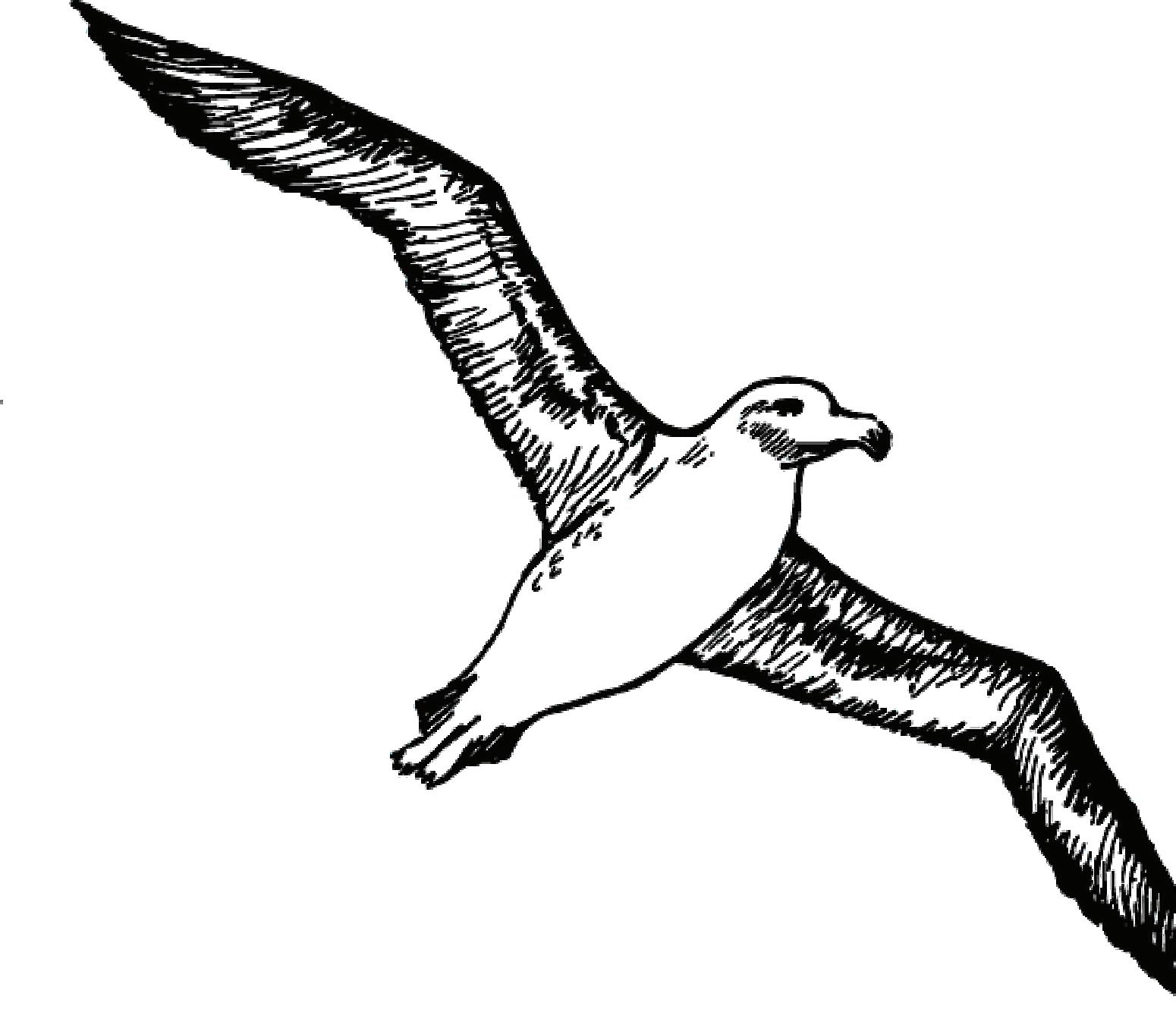
1. How far can albatrosses fly?
2. Up to how fast can they fly?
3. Where are albatrosses the most comfortable?
4. What do albatrosses need to take off?
5. How many eggs are there in an albatross’s brood?
6. For how long does the average albatross live?
N
runway catch fly flow egg fish breed
PLEASE CONTACT
ALISON SMITH IF
› Data projectors and speakers or flatscreen TVs for training
› GoPros or similar waterproof devices to film training sessions
› Good-quality waterproof binoculars
› Prizes for golf days and fundraising events
› Towels for casualties
› Groceries such as tea, coffee, sugar and cleaning materials
› Long-life energy bars
› Wet and dry vacuum cleaners
› Dehumidifiers
› Small generators
› Good-quality toolkits
› Top-up supplies for medical kits
› Waterproof pouches for cellphones
43 063 698 8971 Port Nolloth
WESTERN CAPE
45 066 586 7992 Strandfontein (Matzikama)
24 060 960 3027 Lambert’s Bay
04 082 990 5966 Mykonos
34 082 990 5974 Yzerfontein
18 082 990 5958 Melkbosstrand
03 082 990 5963 Table Bay
02 082 990 5962 Bakoven
08 082 990 5964 Hout Bay
26 082 990 5979 Kommetjie
29 082 990 5980 Air Sea Rescue
10 082 990 5965 Simon’s Town
16 082 990 6753 Strandfontein
09 072 448 8482 Gordon’s Bay
42 063 699 2765 Kleinmond
17 082 990 5967 Hermanus
38 072 446 6344 Theewaterskloof Dam
30 082 990 5952 Agulhas
33 082 990 5957 Witsand
31 082 990 5978 Still Bay
15 082 990 5954 Mossel Bay
23 082 990 5955 Wilderness
12 082 990 5956 Knysna
14 082 990 5975 Plettenberg Bay
EASTERN CAPE
46 076 092 2465 Storms River 36 082 990 5968 Oyster Bay 21 082 990 5969 St Francis Bay 37 079 916 0390 Jeffreys Bay 06 082 990 0828 Gqeberha 11 082 990 5971 Port Alfred 49 087 094 9774 Mdumbi (Aux) 47 076 100 2829 Kei Mouth (Aux) 07 082 990 5972 East London 28 082 550 5430 Port St Johns (Aux)
KZN
32 082 990 5951 Port Edward 20 082 990 5950 Shelly Beach 39 072 652 5158 Rocky Bay 41 063 699 2687 Ballito 05 082 990 5948 Durban 50 082 990 5948 Umhlanga 19 082 990 5949 Richards Bay 40 063 699 2722 St Lucia
MPUMALANGA
35 060 962 2620 Witbank Dam
GAUTENG
27 060 991 9301 Gauteng
NORTH WEST 25 082 990 5961 Hartbeespoort Dam
FREE STATE 22 083 626 5128 Vaal Dam
48 | SEA RESCUE SUMMER 2022
ABSA Heerengracht
Branch code: 506 009
Account number: 1382480607
Account holder: National Sea Rescue Institute

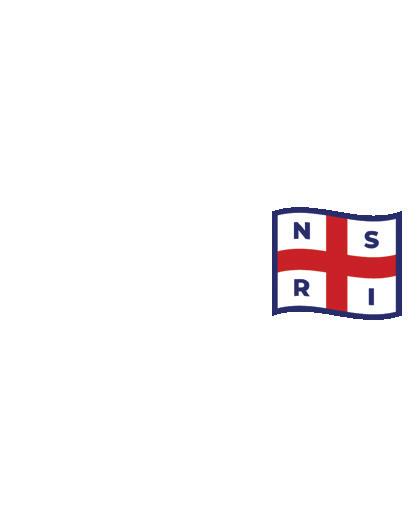
Swift code: ABSA-ZA-JJ
PAY ONLINE: https://www.nsri.org.za/ support-us/donate
If you choose to do an EFT, please use your telephone number as a unique reference so that we are able to acknowledge receipt, or email your proof of payment to info@searescue.org.za.


Scan this QR code or visit the link below to pay using SnapScan. https://pos.snapscan.io/qr/ STB4C055
Please use your cellphone number as base/project reference so we can acknowledge your donation.
Scan this QR code or visit the link below to pay using Zapper. https://www.zapper.com/ url/KU1oB
Please use your cellphone number as base/project reference so we can acknowledge your donation.
nsri.org.za




